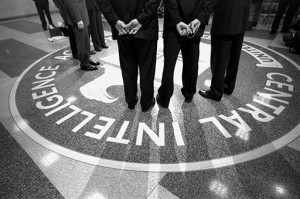The cynicism of Israeli settlement policy
In case anyone has any doubts about the cynical motivation that has often inspired the Israeli Government’s practice of unofficially encouraging the establishment of settlements in occupied territory as a calculated instrument of territorial expansion:
You’ll be interested in this anecdote, I think. Coincidentally, four of the six or seven persons present at that small dinner party thirty-seven years ago had Princeton connections: Prince Saud al Faisal (Hun School and Princeton Class of 1964); Prince Turki al Faisal (Hun School, then Lawrenceville School, and briefly a member of the Princeton Class of 1967 before transferring to Georgetown University); Hal Saunders (Princeton Class of 1952) and myself (Princeton ’51). Saud is still foreign minister; Turki later served as Saudi ambassador in both London and Washington; he now heads a policy research center in Riyadh.
Personal note to the file, dated April 1975 (written shortly after the assassination of King Faisal the month before):
I was the CIA Station Chief in Saudi Arabia from 1970 to 1977. During the height of Henry Kissinger’s campaign of intensive “shuttle diplomacy” following the end of the October 1973 Yom Kippur War, the Secretary of State made frequent visits to Riyadh to brief King Faisal. On one of those visits, while he and the king were conferring at the royal diwan, a small group of us met for dinner at the home of a senior Saudi royal counselor, Shaikh Kamal Adham, the king’s brother-in-law. Present were two of the king’s sons, Saud al Faisal (now Foreign Minister) and Turki al Faisal (now head of the Saudi foreign intelligence service). The only other American present besides myself was Harold (“Hal”) Saunders, at that time the senior advisor on Middle East Affairs attached to the NSC. (Hal later succeeded Joe Sisco as Assistant Secretary of State for NEA, and now heads the Kettering Foundation.)
After dinner, Hal Saunders produced a large scale map of the Golan Heights, and invited us all to gather around him while he told us about the progress of negotiations in that sector. Hal started by pointing out the latest Israeli proposal for the location of the ceasefire line that was to separate Israeli and Syrian forces. It had been prominently delineated on the map with a green felt-tip pen. After Hal explained that the line had been drawn personally by Moshe Dayan at meetings in Jerusalem on the previous day, he pointed out the location of various Israeli settlements that had been established on Syrian territory since the end of the Six-Day War in June, 1967, which the Israelis insisted would have to be on their side of the new demarcation line.
Hal then told us of an exchange between Henry Kissinger and Golda Meir that had taken place only a few hours before, over breakfast that very morning at the King David Hotel in Jerusalem. Henry had said to the Israeli Prime Minister: “Golda, it’s those God damned settlements that are causing us all the trouble”. To this, Mrs. Meir had responded: “Henry, why do you think we put them there?”
NOTE: Israeli formally annexed that part of the Golan Heights in 1981, a move that has not been recognized by any other governmental authority.
– Ray Close

